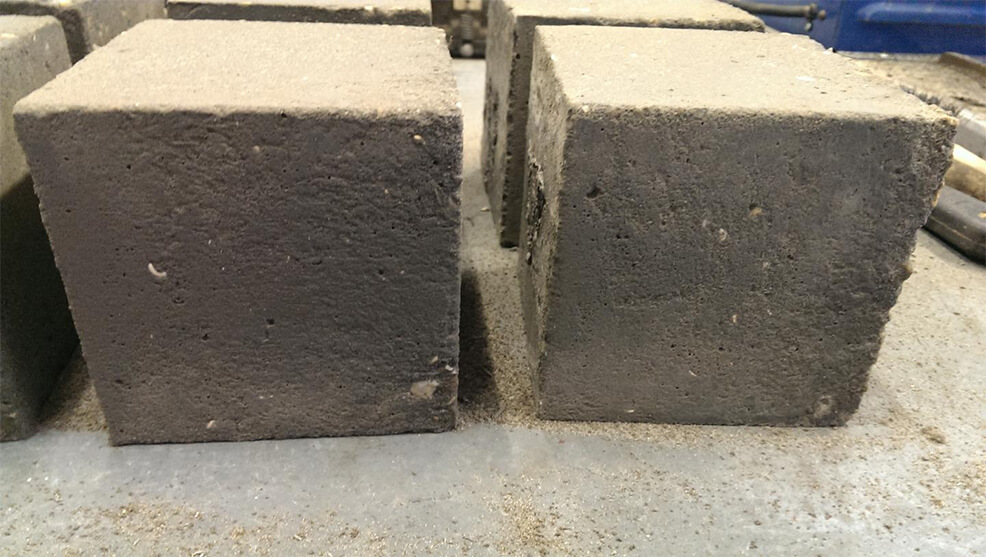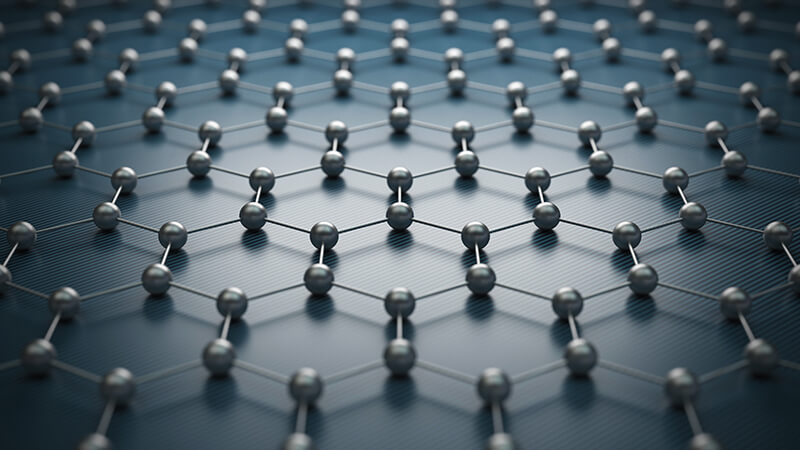
25th April 2018 Scientists create innovative new 'green' concrete using graphene A new greener, stronger and more durable concrete made using the wonder-material graphene could revolutionise the construction industry.
Experts from the University of Exeter in the UK have developed a pioneering new technique that uses nanotechnology to incorporate graphene into traditional concrete production. The new composite material – which is over twice as strong as, and four times more water resistant than existing concretes – can be used directly by the construction industry on building sites. All of the samples tested meet British and European standards for construction. Crucially, the new graphene-reinforced material also drastically reduces the carbon footprint of conventional concrete production methods, making it more sustainable and environmentally friendly. Using this new technique, other nanomaterials can be incorporated into concrete, the research team believes. This could further modernise construction, which is among the most energy-intensive industries and contributes over 10% of annual carbon emissions worldwide. Their work is published this week in the journal Advanced Functional Materials.
"Our cities face a growing pressure from global challenges on pollution, sustainable urbanisation and resilience to catastrophic natural events, amongst others," explains Professor Monica Craciun, co-author of the paper. "This new composite material is an absolute game-changer in terms of reinforcing traditional concrete to meets these needs. Not only is it stronger and more durable, but it is also more resistant to water, making it uniquely suitable for construction in areas which require maintenance work and are difficult to be accessed. "Yet perhaps more importantly, by including graphene we can reduce the amount of materials required to make concrete by around 50% – leading to a significant reduction of 446kg/tonne of the carbon emissions. This unprecedented range of functionalities and properties uncovered are an important step in encouraging a more sustainable, environmentally-friendly construction industry worldwide." Previous work on using nanotechnology has concentrated on modifying existing components of cement, one of the main elements of concrete production. For this new study, Craciun's team created a method that centres on suspending atomically-thin graphene in water with high yield and no defects, low cost and which is compatible with modern, large-scale manufacturing requirements. Dimitar Dimov, the lead author and also from the University of Exeter added: "This ground-breaking research is important as it can be applied to large-scale manufacturing and construction. The industry has to be modernised by incorporating not only off-site manufacturing, but innovative new materials as well. "Finding greener ways to build is a crucial step forward in reducing carbon emissions around the world and to protect our environment as much as possible. It is the first step, but a crucial step in the right direction to make a more sustainable construction industry for the future."
Comments »
If you enjoyed this article, please consider sharing it:
|








